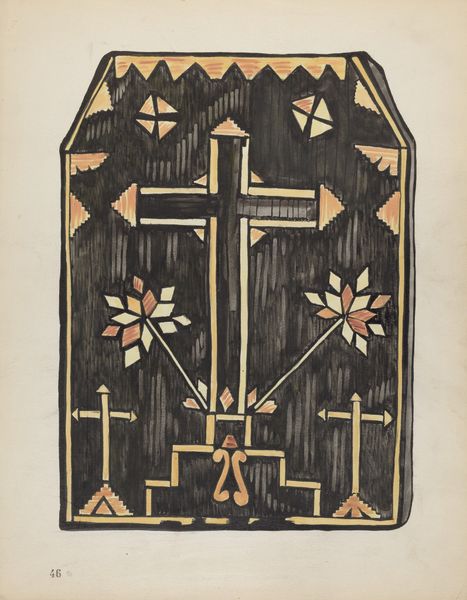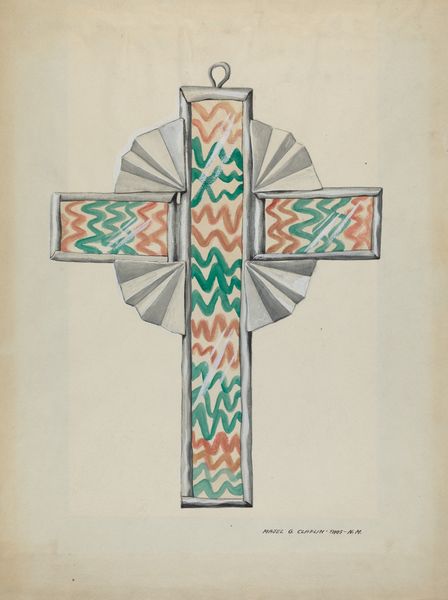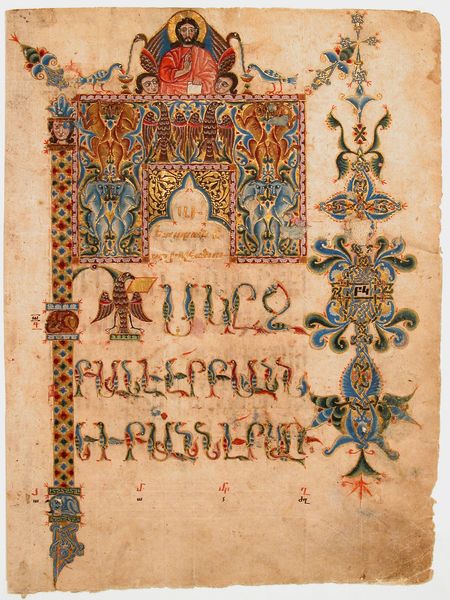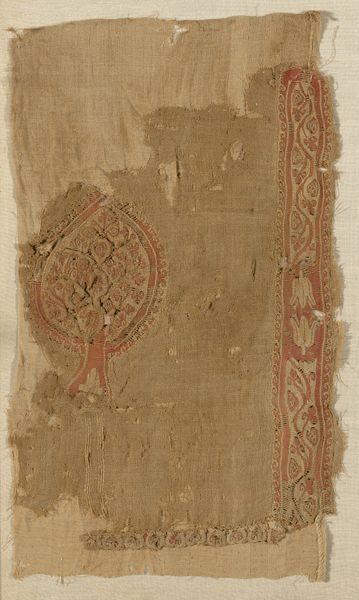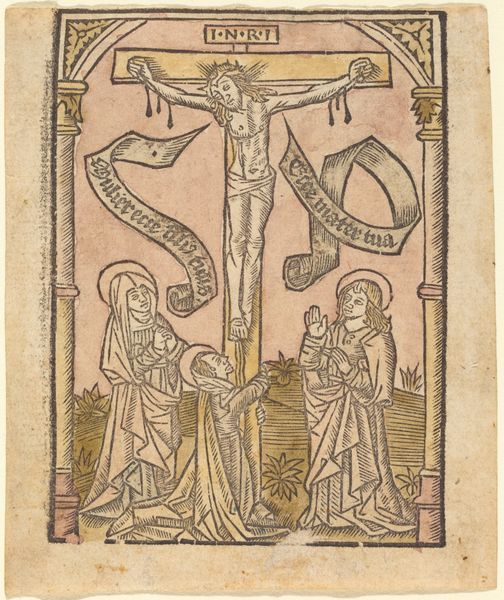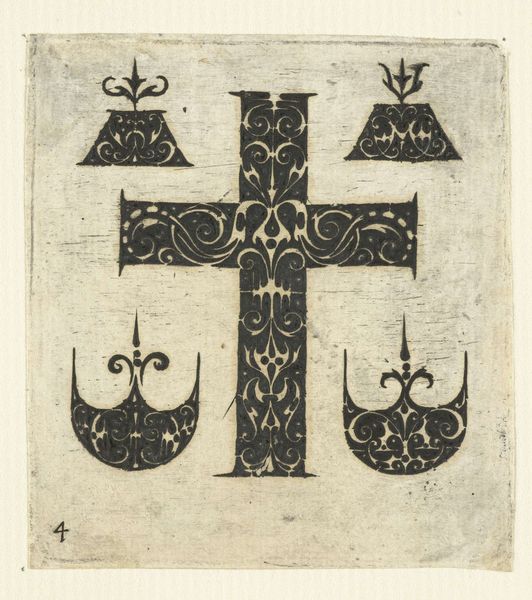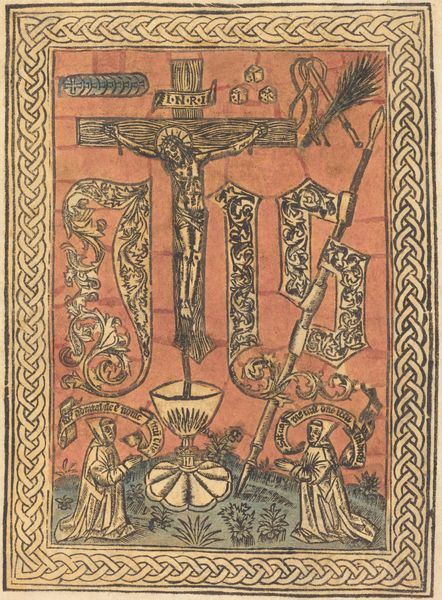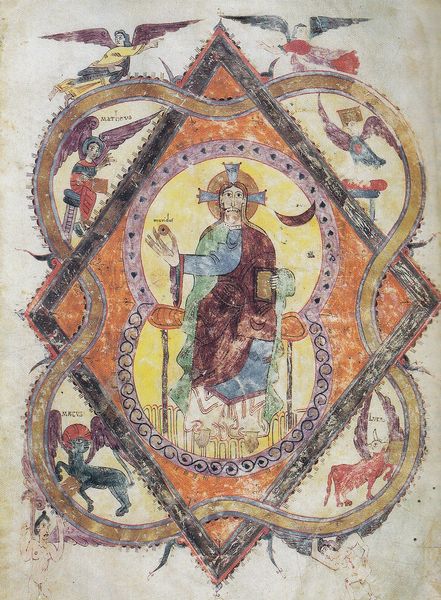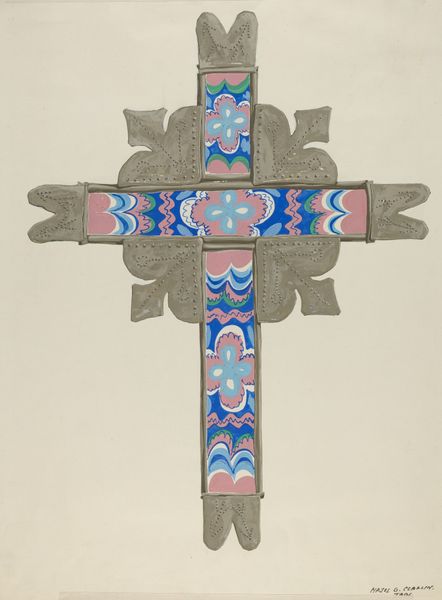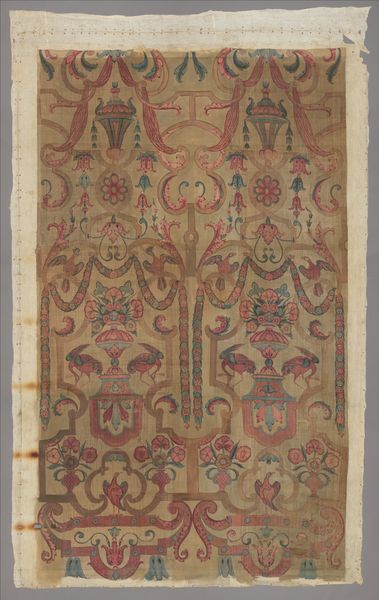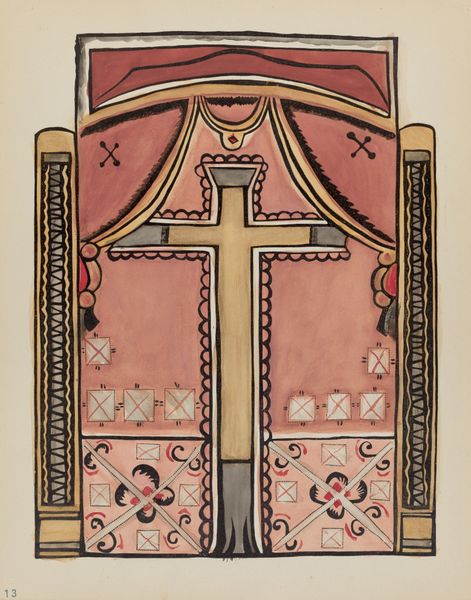
fibre-art, weaving, textile, wool
#
byzantine-art
#
fibre-art
#
water colours
#
pottery
#
weaving
#
textile
#
wool
#
figuration
#
geometric
#
ancient-mediterranean
#
abstraction
Dimensions: 54 1/2 x 27 1/2 in. (138.43 x 69.85 cm) (irregular)
Copyright: Public Domain
Editor: This is a Coptic textile fragment, a curtain from around the 5th or 6th century, made of wool. There’s something both simple and grand about its design—a central cross surrounded by floral and geometric motifs. What symbols stand out to you in this piece? Curator: The cross, of course, immediately speaks to its Christian context, but even beyond that, consider the use of geometric patterns and stylized floral elements. These aren’t merely decorative; they are visual shorthand. The cross itself isn't just an emblem of faith but also a cosmic symbol, a meeting point. Editor: A meeting point? Curator: Indeed. Think of it as the intersection of the earthly and divine realms. The surrounding floral designs might represent paradise, while the geometric shapes evoke order and structure. Notice how even within these repeating shapes, there’s subtle variation? What does that tell you? Editor: Perhaps a reminder of the human element, that even in striving for order, imperfection and individuality persist? Curator: Precisely. And that tension is central to the human experience of faith. It uses familiar imagery of the time—garlands, common in Roman art—adapting and re-purposing visual languages. The Coptic weavers infused existing visual vocabularies with new meaning. Consider, for example, that a geometric shape isn't just a shape; it embodies numerical harmonies—perceived as divine principles. Editor: It's amazing how much history and meaning can be woven into a single textile. Curator: Absolutely. These aren’t just decorations; they're potent visual statements reflecting a whole worldview.
Comments
minneapolisinstituteofart about 2 years ago
⋮
This 1,500-year-old cloth was made by a Christian Egyptian weaver to be used as a sanctuary curtain in a Coptic church or monastery. It probably served later as a burial pall to cover the coffin of an important person. Because Egypt’s climate is conducive to textile preservation, the fabric was still in good condition when it was unearthed. With its many symbolic images, this curtain is among the most important early Christian fabrics that survive today. The combination of a wreath, traditionally awarded to winners of competitions, and the Latin cross, which refers to Christ’s crucifixion, was meant to symbolize victory over death and the joy of everlasting life. The twelve fruits on the wreath may be a reference to the twelve kinds of fruit on the Tree of Life, as found in the Christian Bible’s book of Revelation, suggesting that the Cross itself is equated with the Tree of Life.
Join the conversation
Join millions of artists and users on Artera today and experience the ultimate creative platform.
